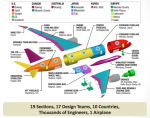ARCHICAD 20 – A fresh look at BIM
GRAPHISOFT, the leading Building Information Modeling (BIM) software developer for architects and designers, announced today the latest version of its industry-leading BIM software solution. ARCHICAD 20 features a number of important functional improvements that put the emphasis on the “I” in BIM, increasing the value for both ARCHICAD users and external stakeholders alike. Its brand new, “flat-design” graphical UI sets the new version apart from run-of-the-mill BIM tools. “The true potential of BIM is that it can hold all the necessary information for designing, constructing and operating buildings,” said Peter Temesvari, Director of Product Management at GRAPHISOFT. “A significant part of this information is non-geometrical data. ARCHICAD 20 offers powerful workflows to manage, visualize and exchange such information with any stakeholder participating in the design and construction process.” What’s new in ARCHICAD 20 Enhanced Information Management Store the Information: Information is the most valuable part of BIM and ARCHICAD 20 helps architects and designers get the most of it! ARCHICAD 20 allows users to utilise their Building Information Model as the central storage place for all related information. They can even easily store and maintain design information that was not created using CAD or BIM tools, like Excel spreadsheets. Display the Information: ARCHICAD 20 leverages well-structured information resulting in informative design visualization, which ensures enormous efficiencies throughout design and construction. With the help of smart filters and brand new graphical override, designers can freely change the representation of any 2D and 3D views of elements with similar properties. This feature allows a number of workflows that make communication, coordination and model checking much more efficient. Share the Information: ARCHICAD 20 is among the first BIM applications to fully support the IFC 4 open-source standard. IFC 4 supports new coordination workflows (Design Transfer View and Reference View) and provides great help […]







